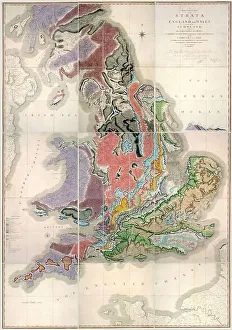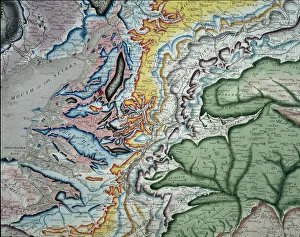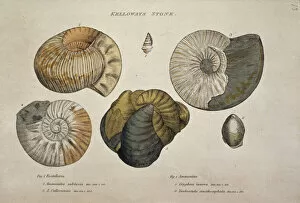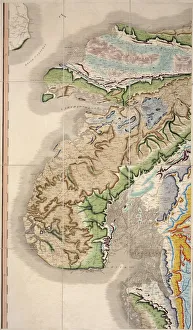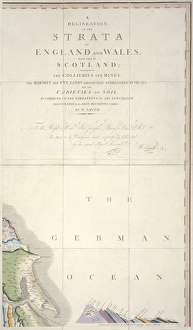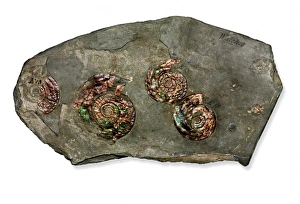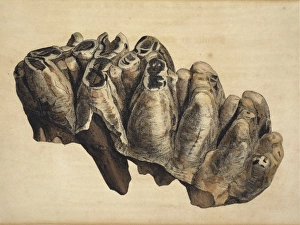1769 1839 Collection
In 1769, a brilliant mind was born - William Smith
All Professionally Made to Order for Quick Shipping
In 1769, a brilliant mind was born - William Smith. Little did the world know that this English geologist would revolutionize the field of stratigraphical geology and leave an indelible mark on scientific history. One of his most notable contributions was the creation of "William Smith's Geological Map. " This masterpiece depicted the intricate layers of Earth's crust, showcasing its geological formations like never before. It became a cornerstone in understanding our planet's history and continues to be revered by scientists today. Amongst these layers lies Kelloways Stone, a distinctive rock formation named after John Kellaway. Its unique composition and characteristics have fascinated geologists for centuries, providing valuable insights into Earth's ancient past. But William Smith's impact extended beyond just rocks and maps. He captured the essence of London life through his work "Wheatley's Cries Of London. " This collection portrayed everyday scenes from bustling streets to market vendors selling their wares, including Strawberries Scarlet Strawberries by J Wheatley R. These vivid illustrations transported viewers back in time, offering glimpses into the vibrant culture that once thrived in this historic city. Interestingly enough, another influential figure emerged from within William Smith's own family - John Phillips. As his nephew and a British geologist himself, Phillips carried forward his uncle's legacy with great pride. His dedication to furthering geological knowledge ensured that William Smith’s groundbreaking discoveries continued to shape scientific thought long after his passing in 1839. Amidst all these remarkable achievements lies one fossil that has captivated both experts and enthusiasts alike: Psiloceras planorbis, also known as nacreous ammonite. With its mesmerizing spiral shell pattern dating back millions of years ago, it serves as a reminder of Earth’s ancient inhabitants and their enduring presence throughout geological time. Today we honor William Smith (1769-1839), whose brilliance forever changed our understanding of Earth’s history.

